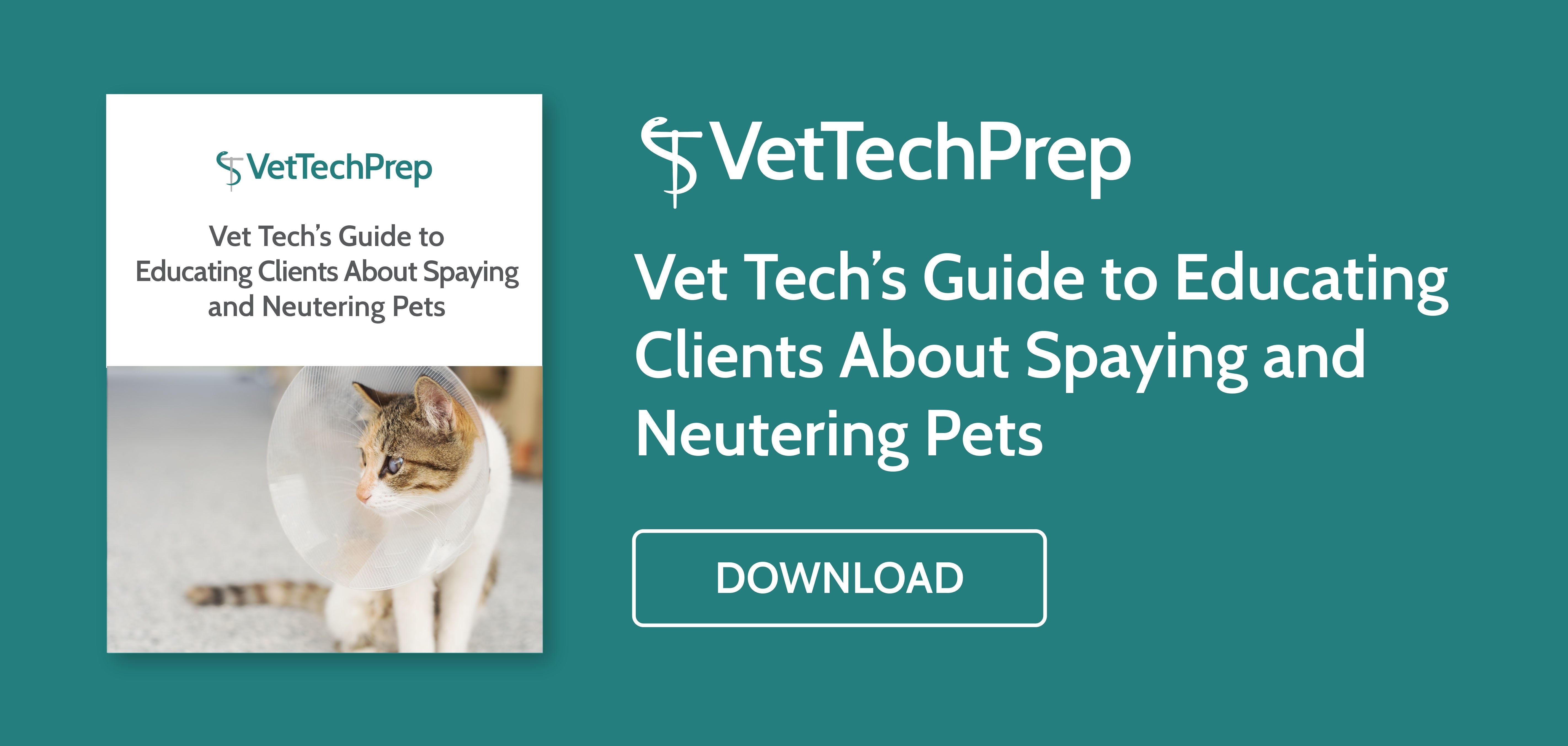.jpg?width=864&name=role-ig%20(1).jpg)
In most veterinary practices, the veterinarian performs several spays or neuters per day. Once the procedure is finished, the anesthetic gas is turned off, and the endotracheal tube is pulled, the patient is typically handed over to a vet tech for recovery. What does the post-op recovery process involve?
In the immediate post-op period, pets are monitored closely. Each patient’s vital signs should be checked at regular intervals, in addition to keeping the pet in an area where it can be continually visualized. In most cases, patients receive a hands-on assessment every 5-15 minutes during the first hour post-op.
Parameters typically assessed during immediate post-op monitoring include:
- Body temperature: Low body temperature is common during and after anesthesia. If a pet’s body temperature is low, warming measures (such as a heating pad) should be considered.
- Respiratory rate: Decreased respiration is often associated with low body temperature, while an elevated respiratory rate may indicate pain. Respiratory rate should be monitored closely, with attention given to trends that may indicate a need for treatment.
- Heart rate: Bradycardia (low heart rate) is commonly caused by drug/anesthesia effects, while tachycardia (high heart rate) may indicate pain or anxiety. Compare the pet’s post-op heart rate to that obtained during pre-surgical evaluation.
- Blood/pulse pressure: It is often not feasible to monitor blood pressure in post-op pets, though this would be ideal. In many cases, blood pressure is approximated by feeling for the presence of strong, palpable peripheral pulses.
- Mucous membrane color: Pink mucous membranes indicate adequate perfusion.
Approximately one hour after surgery, depending on the patient’s status and degree of observed recovery, the frequency of monitoring is typically decreased. In most cases, once this immediate post-op period has passed, monitoring frequency is decreased to every 30-60 minutes. This degree of monitoring is continued until the pet is discharged to its owners.
In general, pets should be monitored until three or more hours after surgery. In most cases, this means that pets are discharged late in the afternoon on the day of surgery. Some practices schedule discharge appointments, with owners arriving at scheduled times to pick up their pets, while other practices perform surgical discharges on a walk-in basis between scheduled appointments.
When the client arrives to pick up their pet, a vet tech or vet assistant will prepare the pet for discharge. They will remove the pet’s IV catheter (if applicable), check the pet’s incision, and clean or brush the pet if necessary. Before the pet is returned to its owner, a vet tech (or, in some cases, the veterinarian) should meet with the client to provide necessary discharge instructions for the pet. Most practices have typed discharge instructions that are sent home with clients; even so, it is important to verbally review instructions to ensure that owners are prepared to care for their pets.
Typical discharge instructions after a spay/neuter include:
- Your pet may be groggy for the next 24-48 hours. This is normal after anesthesia. If your pet seems excessively sedate, please contact us..
- Your pet may have some post-anesthesia nausea, so feed a small meal tonight. Give half of your pet’s regular meal at dinnertime; if he/she still seems hungry, you can offer the rest of the meal 1-2 hours later. Some pets take a day or two to regain their appetite after surgery; this is typically not a cause for concern.
- Restrict your pet’s activity for 10 days, avoiding running, jumping, and rough play. Dogs should be leash-walked only and cats should be kept indoors.
- Keep the incision dry for 10 days. No baths or swimming.
- Check the incision daily. A small amount of swelling or redness is normal, but any concerns should be checked by a veterinarian.
- Give pain medication as directed and monitor for side effects.
- Keep an e-collar on your pet at all times (if provided) to prevent licking at the incision.
- Return for suture removal at 7-14 days (if skin sutures were placed).
- Provide contact information for the veterinary practice and the nearest emergency clinic, in case of post-op concerns.
Clients often have questions about their pet’s surgery and expected recovery. Allow time to answer these questions thoroughly, so that your client can have an accurate idea of what to expect at home.
Encourage the client to call if they have any questions or concerns. This allows possible complications to be discovered and addressed early, instead of clients waiting for them to become more serious.
in
Spay / Neuter
1 Comment




